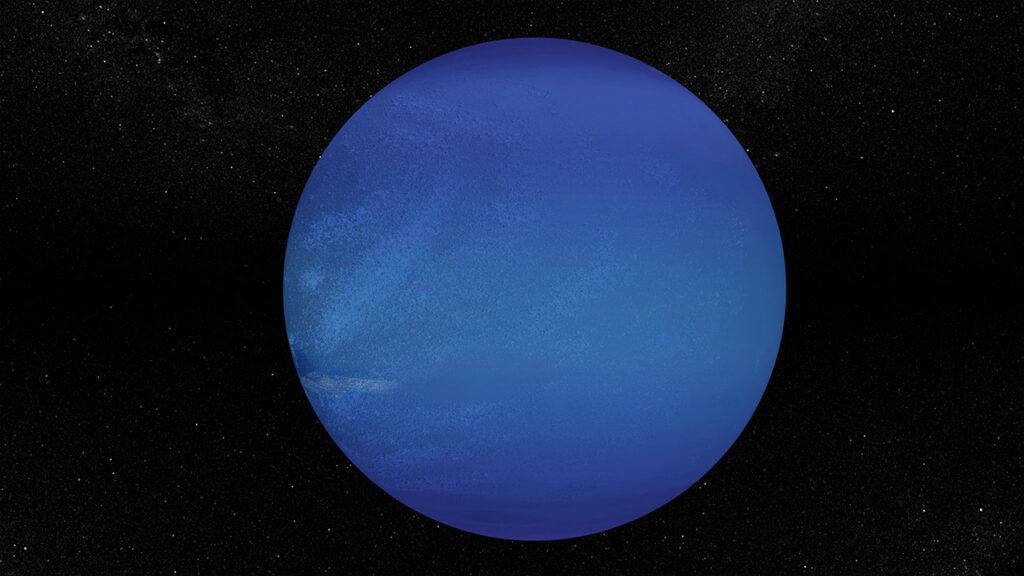Neptune is the eighth farthest planet from the Sun in the solar system. It is an ice giant planet with properties similar to Uranus. It is mainly composed of various forms of substances such as water, ammonia, methane, as well as a large amount of hydrogen and helium. In Western culture, it is named after the Roman sea god Neptune, and in Chinese, it is called “Neptune”, which literally means “the star of the sea king”.

The diameter of Neptune is about 49244 kilometers, approximately 3.9 times the diameter of Earth, and its mass is about 17 times that of Earth, making it the most massive ice giant planet. The atmosphere of Neptune is mainly composed of hydrogen and helium, as well as a small but significant amount of methane. Methane in the atmosphere absorbs red light and reflects blue light, giving Neptune a unique deep blue color. Neptune’s atmosphere is very active, with wind speeds reaching up to 2100 kilometers per hour. The temperature of Neptune’s upper atmosphere is very low, averaging around minus 218 degrees Celsius. The average distance that Neptune travels around the Sun is about 30.07 astronomical units. Its orbital period is approximately 164.8 Earth years, and it takes nearly 165 Earth years to complete one orbit around the Sun. Its average orbital speed is about 5.43 kilometers per second. Neptune’s rotation speed is relatively fast, with a rotation period of about 16.11 hours. So far, only Voyager 2 has flown past Neptune. In 1989, Voyager 2 made its first and only close observation of Neptune and transmitted a large amount of data and images, greatly enhancing our understanding of this distant planet.
Leave a Reply